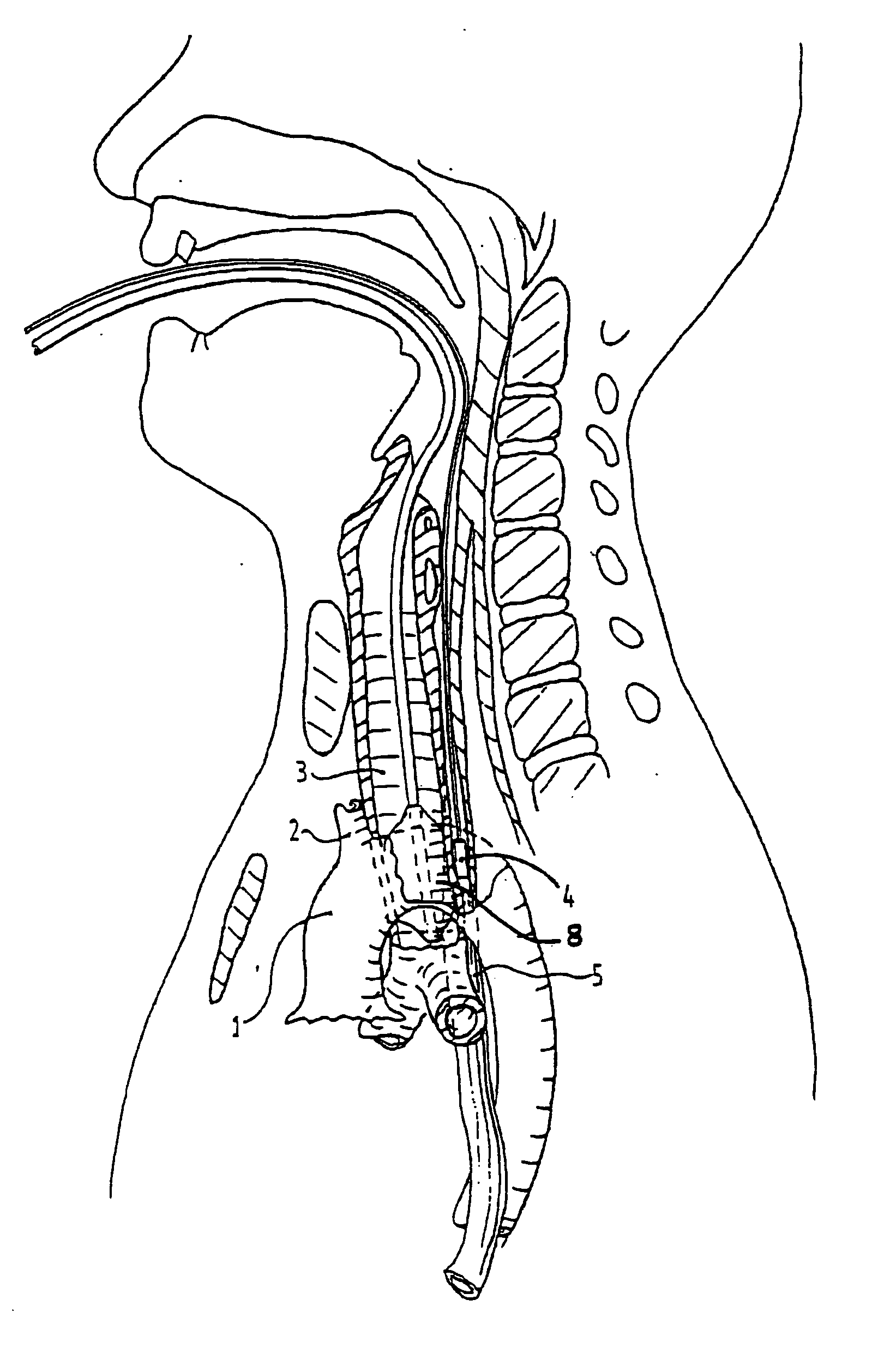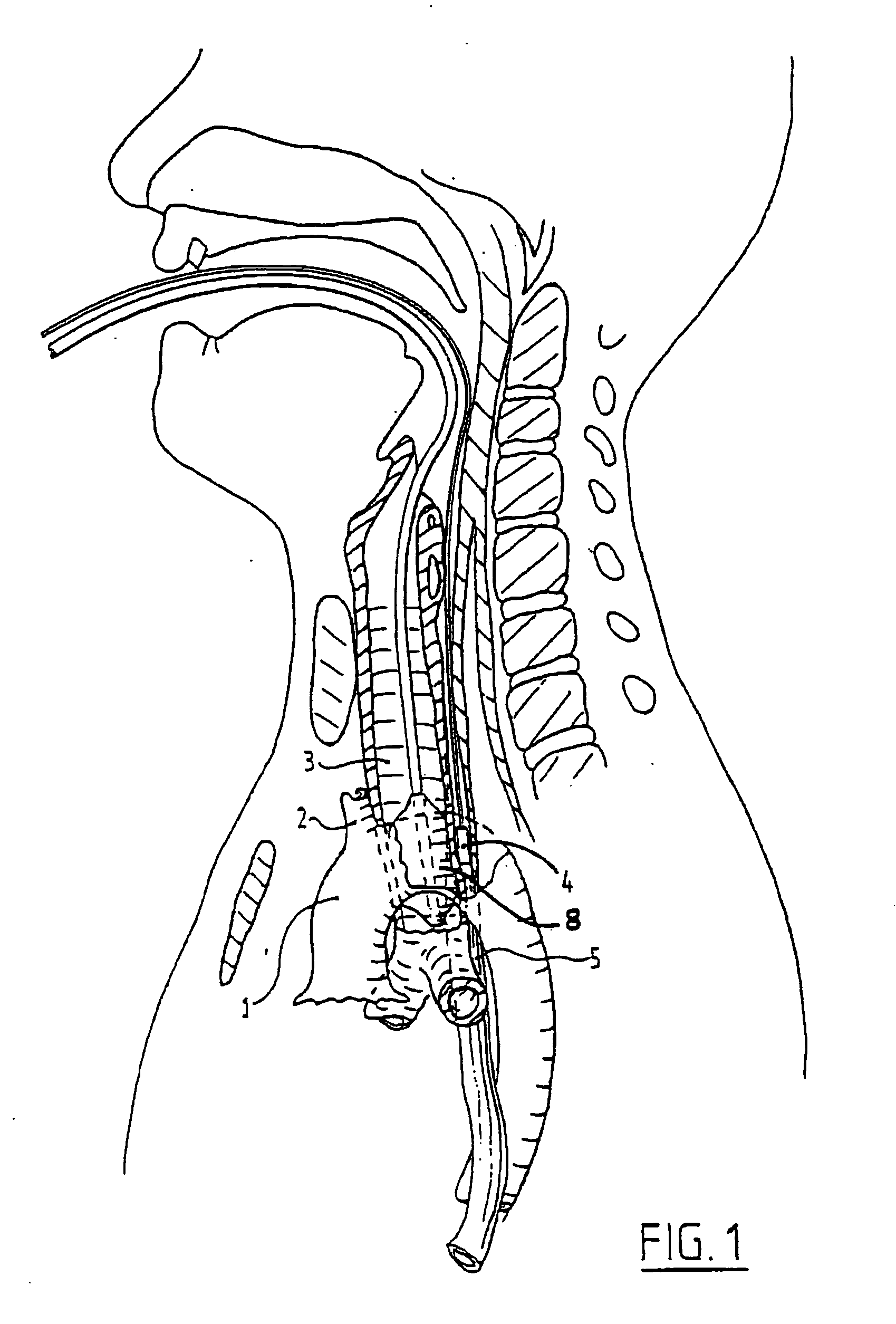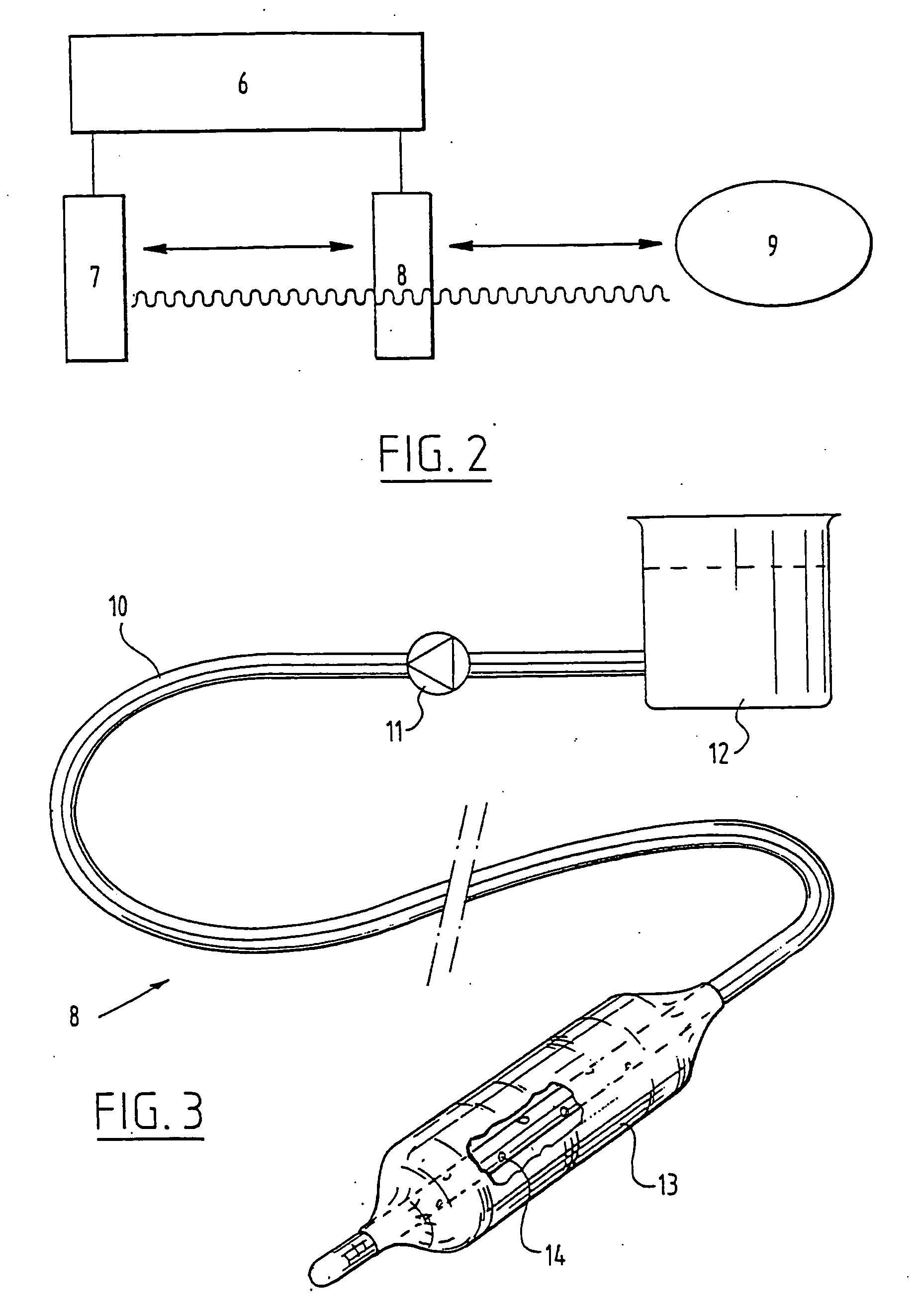Transmission device for ultrasonic imaging system
a transmission device and ultrasonic imaging technology, applied in sonic diagnostics, infrasonic diagnostics, medical science, etc., can solve the problems of inability to use during cardiac surgery with cardio-pulmonary bypass, inconvenient operation, and limited spatial appreciation, so as to reduce time loss and fast diagnosis
- Summary
- Abstract
- Description
- Claims
- Application Information
AI Technical Summary
Benefits of technology
Problems solved by technology
Method used
Image
Examples
Embodiment Construction
[0048] As explained in the description visualization of the aorta ascendens 1 and the upper part of the main vascular side branches 2 is difficult to view because an obstruction of the trachea 3 disturbs the ultrasound waves originating from an echoprobe 4 in the esophagus 5. When a patient is intubated with a transmission device according to the invention, which normally consists of a distensible balloon connected to a supply line for a sound wave transmission fluid medium, a suitable sound wave path is formed for the sound waves originating from an ultrasound endoscope positioned in the esophagus 5. An optimal visualization of these parts of the aorta is thus obtained by a combined use of an endoscope device and a transmission device forming an ultrasonic imaging system according to the invention.
[0049]FIG. 2 shows very schematically an ultrasonic imaging system 6 comprising an ultrasound endoscope 7 and a separate transmission device 8. When viewed with a target organ 9 ultrasou...
PUM
 Login to View More
Login to View More Abstract
Description
Claims
Application Information
 Login to View More
Login to View More - R&D
- Intellectual Property
- Life Sciences
- Materials
- Tech Scout
- Unparalleled Data Quality
- Higher Quality Content
- 60% Fewer Hallucinations
Browse by: Latest US Patents, China's latest patents, Technical Efficacy Thesaurus, Application Domain, Technology Topic, Popular Technical Reports.
© 2025 PatSnap. All rights reserved.Legal|Privacy policy|Modern Slavery Act Transparency Statement|Sitemap|About US| Contact US: help@patsnap.com



